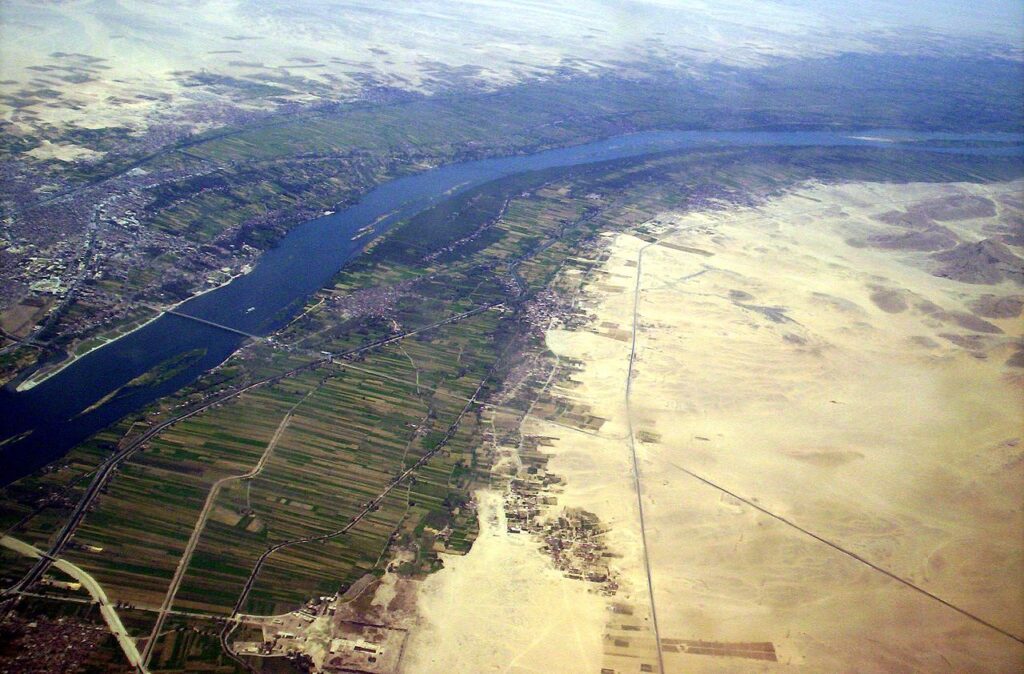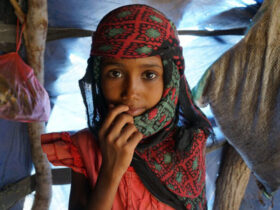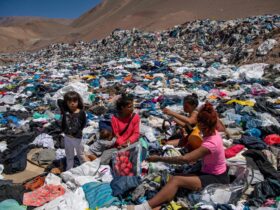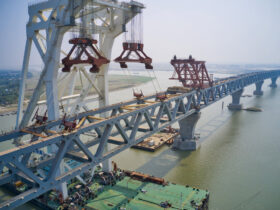LOS ANGELES — The Grand Ethiopian Renaissance Dam (GERD) has been one of the most controversial issues in North Africa for the last decade. The GERD, a gravity dam which is currently being filled, is located nine miles off of the Ethiopian side of the Ethiopia-Sudan border and on the Blue Nile, a major tributary of the Nile that is responsible for 85% of the river’s overall volume. It is also the reason for over ten years of arguing and tensions between Egypt, Sudan and Ethiopia.
The dam’s primary purpose is to generate electricity for the 70% of Ethiopia’s rural population who lack it. The dam is also meant to enrich the country through the sale of excess electricity. The giant infrastructure undertaking also serves as a rallying point for Ethiopians who see it as a way for their country to move out of poverty.
On the other hand, Egypt and Sudan, as downstream countries, are worried that the GERD will permanently decrease the amount of water that reaches them. Egypt, which is dependent on the Nile for agriculture, hydropower and 94% of the country’s total water supply, is particularly threatened and has opposed the GERD since its conception in 2011. Ethiopia claims that the dam will help its people without harming Sudan or Egypt, while Egypt says that the GERD will short the country on the resources it needs.
With both sides making such bold statements about the benefits and consequences of the dam, it is difficult to determine which statements are true and what environmental impact the GERD will end up having.
This situation with the GERD is reminiscent of the controversy surrounding the Aswan High Dam, another dam on the Nile that was completed in 1970 and is located in Egypt. Similar to Ethiopia’s desire to use the electricity and profits generated by the GERD to advance as a country, the Aswan High Dam was a point of pride amongst the Egyptian people and a key factor in Egypt nationalizing the Suez Canal and taking back control of it and their country from European nations (the revenue from the canal was needed to fund the dam).
Before the construction of the Aswan High Dam, there were numerous concerns that it would end up doing more harm than good to the surrounding environment. Critics worried that the dam would lead to sedimentation in the reservoir, erosion of the coast and the land at the base of the dam, an increase in the spread of diseases and decreased soil fertility in the area.
The Aswan High Dam has been in use for over 50 years now, and according to several experts including Cecilia Tortajada, editor-in-chief of the International Journal of Water Resources Development and senior research fellow at the Institute of Water Policy, and Asit Biswas, member of the World Commission on Water and co-founder of the International Water Resources Association and the World Water Council, the benefits have thus far proven to outweigh its negative effects. The dam’s primary mission is to stabilize the flood-drought cycle of the Nile in Egypt, and from this point of view it has been an unequivocal success. Since the dam was completed, the Nile’s annual flood has not harmed human lives or agricultural land, and enough water has been stored to see Egypt through all subsequent drought years. Another positive side effect of the Aswan High Dam is that the regulation of the Nile’s flow has allowed for year-round irrigation, leading to two or three harvests per year instead of just one. Additionally, the electricity it generated was the main source of power for Egypt until recently, and a key propellant behind the country’s rapid industrialization.
The impact of the Aswan High Dam has not been entirely rosy though; it has led to an increase in the salinity of both the water and the nearby soil used for agriculture, a severe reduction in the silt that has traditionally fertilized the soil, the collapse of some river banks, and infestations of various aquatic weeds. However, the widely accepted consensus is that these side effects can be managed and are far eclipsed by the positives of the dam.
There is no way to be sure what effects the GERD will have, but estimates have been made based on the fallout from the High Aswan Dam and simulations of various scenarios, including failure of the dam and drought and flood seasons. According to Abdelkader Ahmed, a professor of environmental engineering at at Aswan University, the initial filling of the reservoir will flood existing plants in the area (which is heavily occupied by tropical shrubs), killing them off en masse and leading to a large release of carbon dioxide emissions (between one and eight million tons) as they decompose. It will also affect the spawning and migration of several fish species that may become disoriented by the changing temperatures and currents. However, since the GERD is located by Ethiopia’s border, it will likely not cause major changes to the country’s water supply or agricultural land.
Sudan is in a unique in-between position because the GERD stands to benefit the country but also puts it in harm’s way. The GERD will stabilize the flow of the Nile in Sudan and allow for agricultural production year-round (similar to the effect the High Aswan Dam had on Egypt). However, Sudan is also the country most at risk if the dam should fail. Models created by faculty at American University of Sharjah and United Arab Emirates University found that because the GERD is located in an area of Ethiopia prone to earthquakes and surrounded by steep mountains with high rates of erosion and landslides, geological activity is the most likely reason why it would fail. Regardless of the reason, if the GERD collapses, Sudan will face catastrophic damage including the flooding of almost 10,000 mi2 of agricultural land and roads and the transformation of Khartoum, the country’s capital, into a lake.
The forecasted impact for Egypt is not as favorable as the other two countries. A study conducted by researchers at Zagazig University in Egypt and the Technical University of Kosice in Slovakia found that the GERD will reduce the level of both groundwater and surface water in Egypt, which would be detrimental to the agricultural output since most crops grown in the country require large amounts of water. However, if farmers switch to growing crops that use less water, the lower groundwater levels combined with less watering of the plants will increase the salinity of the soil to a level that will damage soil productivity, putting Egyptian farmers in a no-win situation. The dam also inhibits the flow of nutrient-rich sediment that has traditionally replenished downstream agricultural land, further handicapping production capabilities. This could become a serious problem if agricultural output decreases as Egypt’s population growth continues to outpace the ability of the country’s resources to to support it.
The decreased groundwater and surface water levels are concerning on their own since Egypt is already facing increasing levels of water scarcity and has one of the lowest per capita shares of water in the world. According to the United Nations, Egypt is under the water poverty threshold, and will face an “absolute water crisis” by 2025. The country is also concerned about whether Ethiopia will permit the necessary amount of water to be released from the GERD’s reservoir during drought years. Though many talks have taken place between Egypt, Ethiopia and Sudan over the GERD, no agreements have been made about protocol during droughts. For Egypt, whose water supplies are already being stretched very thin, how Ethiopia chooses to react to the next drought could be an inflection point for the country.
It is clear that though the GERD will bring many benefits for Ethiopia and Sudan, Egypt will not share in the good fortune. Regardless, the dam has already been built and the reservoir is filled partway. At this junction it is crucial for the leaders of all three countries to come together to determine how to maximize the GERD’s utility for Ethiopia and Sudan within the constraints of maintaining Egypt’s access to necessary resources.






